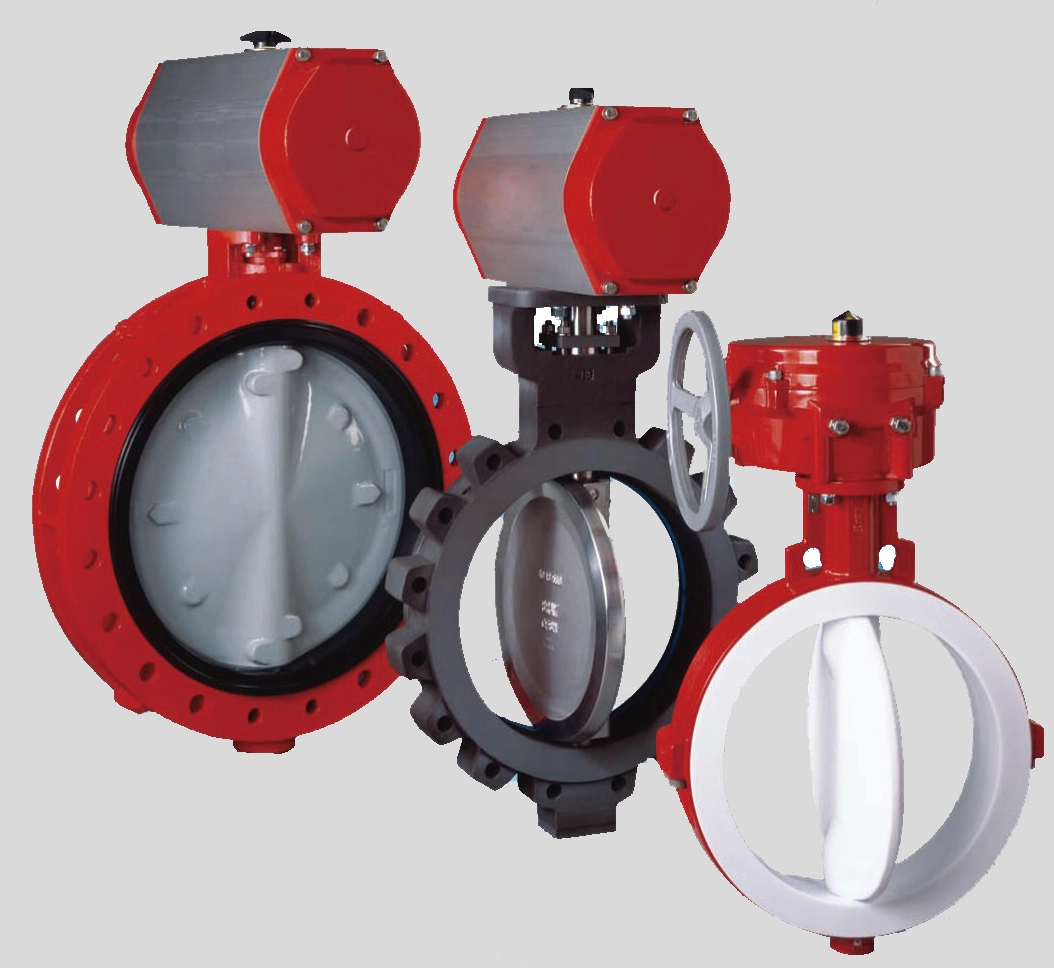An simple introduction of butterfly valves
Butterfly valves are kinds of regulating valves that have simple structures, which can be applied to controlling flows of various fluids, such as air, water, steam, corrosive media, mud, oil products, liquid metal and radioactive media. Butterfly valves' main roles are to cut off and throttle media in the pipelines.
Butterfly valves have features of small operating torque, small installation space and light weights, easy and fast opening and closing, less effort, small fluid resistance and good regulation. Taking butterfly valves with DN1000 as an example, butterfly valves' weights are 2 tons, while gate valves' weights are 3.5 tons; moreover, butterfly valves are easy to be combined with various driving devices, and have good durability and reliability.
Butterfly valves can be divided into electric butterfly valves, pneumatic butterfly valves, hydraulic butterfly valves and manual butterfly valves according to drive modes; butterfly valves can be classified into concentric lined butterfly valves, single offset butterfly valves, double offset butterfly valves and
triple offset butterfly valves based on structures; butterfly valves are divided into wafer butterfly valves, flanged butterfly valves, lug butterfly valves and welded butterfly valves according to connection modes; butterfly valves can be divided into vacuum butterfly valves, low pressure butterfly valves, medium pressure butterfly valves, high pressure butterfly valves and ultra high pressure butterfly valves according to working pressure; butterfly valves are classified into high temperature butterfly valves, medium temperature butterfly valves, constant temperature butterfly valves, cryogenic butterfly valves and ultra low temperature butterfly valves according to working temperatures.
The butterfly valves' working principle is that if butterfly valves' discs make a ninety degree turn driven by the valve stems, butterfly valves will be able to complete an opening or closing cycle. We can change deflection angles of butterfly discs to control flows of the media.
Factors to Be Considered in Butterfly Valves' Design
1.
Functions of butterfly valves
When we design
butterfly valves, we need to make sure that whether they are used to connect or cut off media, or they are used for regulating and controlling flows and pressure of media in the pipes. We need to consider different factors when we design sealed auxiliaries for valves with different functions; if valves are used to connect or cut off media in the pipes, we will need to especially take the ability of cutting off the media into consideration, that is, sealing performance of butterfly valves; on the premise of making sure corrosion resistance of the selected materials, low pressure, medium pressure and normal temperature valves often adopt soft sealed structures; medium temperature, high temperature and high pressure valves select hard sealed structures; if valves are used for regulating and controlling flows and pressure of media in the pipes, we should especially consider inherent regulating features and regulating ratios of
butterfly valves.

